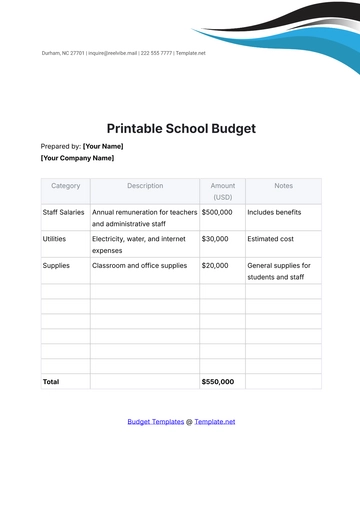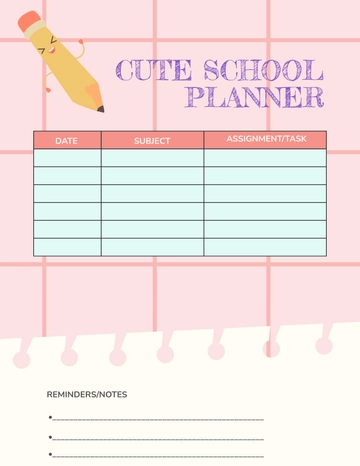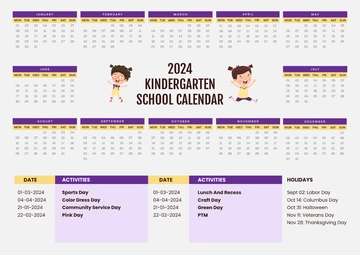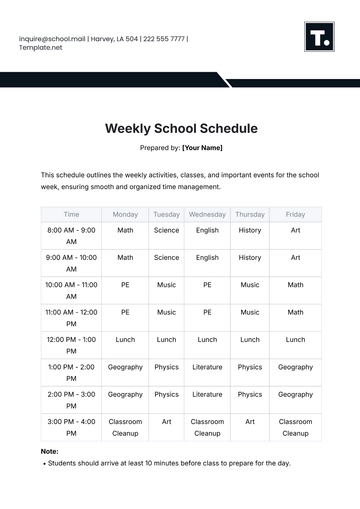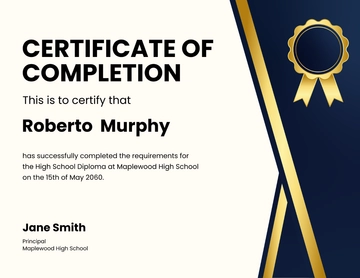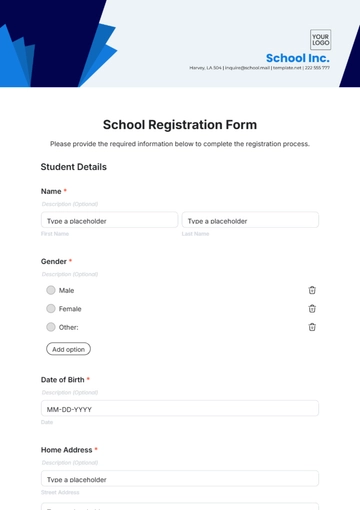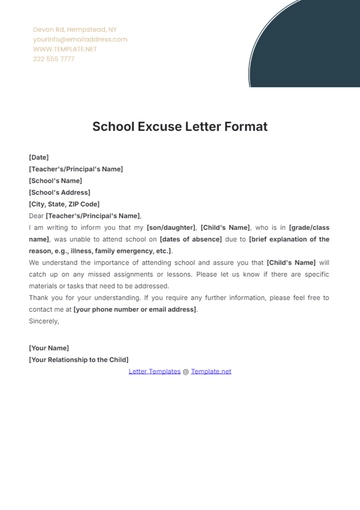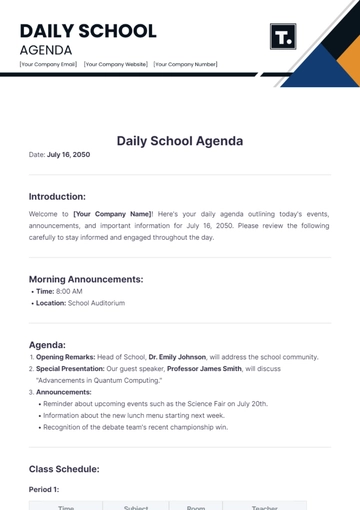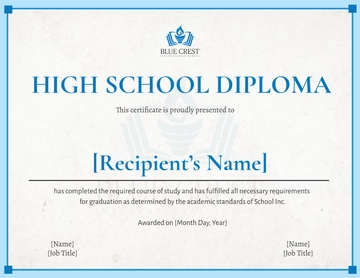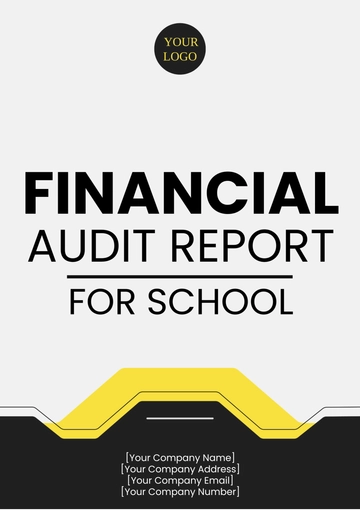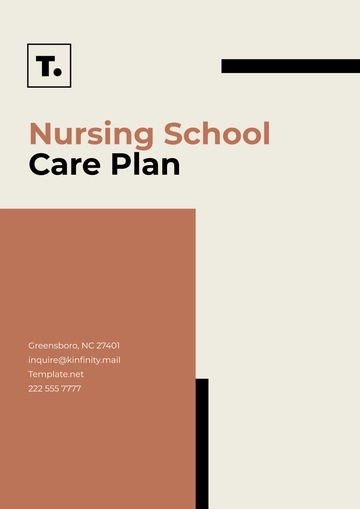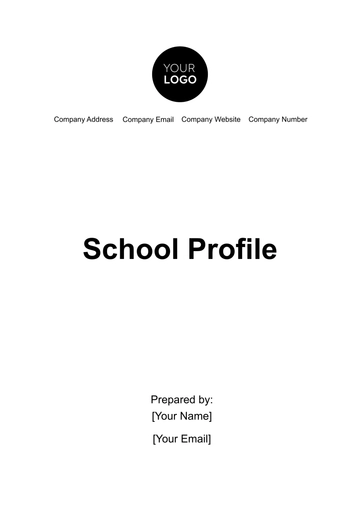Free School Recruitment Strategy
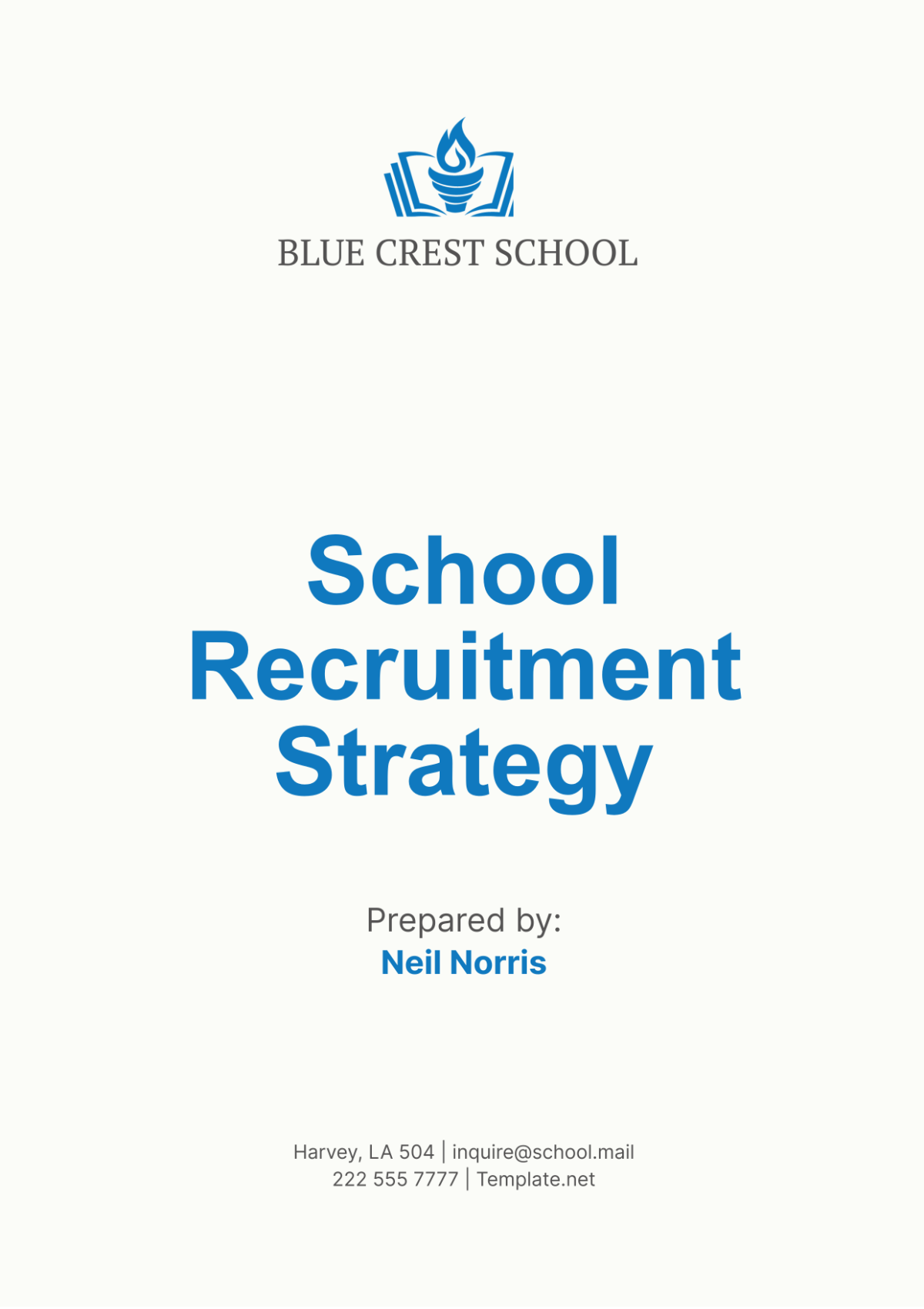
1. Introduction
Recruiting talented and dedicated staff is crucial for maintaining the high standards of education and support provided at [Your Company Name]. This comprehensive School Recruitment Strategy outlines the processes and methods we employ to attract, select, and retain the best candidates. By following these guidelines, we ensure that our recruitment practices are fair, efficient, and aligned with our school’s mission and values.
2. Objectives of the Recruitment Strategy
The primary objectives of our recruitment strategy are essential for building a robust educational team that aligns with the values and goals of [Your Company Name]. These objectives guide our recruitment efforts to ensure we attract, select, and retain the best candidates, fostering a diverse and inclusive environment that promotes excellence in education.
2.1 Attract a Diverse Pool of Highly Qualified Candidates
Attracting a diverse pool of highly qualified candidates is crucial for enhancing the educational experience at our school. Diversity in our staff brings a variety of perspectives, ideas, and teaching methods that enrich the learning environment for students.
Broaden Recruitment Channels: Utilize various recruitment channels, including online job boards, social media, professional networks, and local community advertisements, to reach a wide range of candidates.
Inclusive Job Descriptions: Craft job descriptions that emphasize our commitment to diversity and inclusivity. Highlight the importance of diverse perspectives and experiences in our school culture.
Active Outreach: Engage in active outreach efforts, such as attending career fairs, hosting informational webinars, and collaborating with universities and professional organizations to attract candidates from diverse backgrounds.
2.2 Ensure a Transparent, Fair, and Efficient Selection Process
Ensuring a transparent, fair, and efficient selection process is fundamental to maintaining integrity and trust in our recruitment practices. A structured selection process helps us identify the best candidates while providing a positive experience for all applicants.
Clear Criteria and Guidelines: Establish clear criteria and guidelines for evaluating candidates. Ensure that all members of the selection committee are trained on these criteria to maintain consistency.
Standardized Interview Process: Implement a standardized interview process with a consistent set of questions and evaluation forms. This helps eliminate bias and ensures that all candidates are assessed equally.
Timely Communication: Maintain timely and transparent communication with candidates throughout the selection process. Provide updates on their application status and feedback after interviews.
2.3 Promote Inclusivity and Diversity Within Our Staff
Promoting inclusivity and diversity within our staff is vital for creating a supportive and enriching educational environment. Diverse staff members serve as role models for students and contribute to a culture of respect and understanding.
Diversity Training: Provide diversity and inclusivity training for all staff members to foster an inclusive work environment. This training should cover cultural competency, unconscious bias, and inclusive teaching practices.
Inclusive Policies: Develop and implement policies that support inclusivity, such as flexible working arrangements, anti-discrimination policies, and support for underrepresented groups.
Employee Resource Groups: Encourage the formation of employee resource groups that provide support and networking opportunities for staff members from diverse backgrounds.
2.4 Retain Top Talent Through Effective Onboarding and Professional Development Programs
Retaining top talent is as important as attracting it. Effective onboarding and professional development programs help new hires integrate into the school community and continue to grow in their careers.
Comprehensive Onboarding: Design a comprehensive onboarding program that introduces new hires to the school’s culture, policies, and expectations. Provide mentorship and support during the initial transition period.
Continuous Professional Development: Offer ongoing professional development opportunities, such as workshops, seminars, and training programs. Encourage staff to pursue advanced certifications and degrees.
Career Advancement Opportunities: Create clear pathways for career advancement within the school. Recognize and promote talented staff members to leadership roles and provide opportunities for growth.
2.5 Continuously Improve Our Recruitment Practices Based on Feedback and Evaluation
Continuous improvement of our recruitment practices ensures that we remain effective and competitive in attracting and retaining top talent. Regular feedback and evaluation help identify areas for improvement and adapt to changing needs.
Regular Feedback: Solicit feedback from candidates, new hires, and hiring committee members about their experiences with the recruitment process. Use this feedback to make necessary adjustments and improvements.
Performance Metrics: Track key performance metrics, such as time-to-hire, candidate satisfaction, and retention rates, to evaluate the effectiveness of our recruitment practices.
Process Review: Conduct regular reviews of the recruitment process to identify strengths and areas for improvement. Stay informed about best practices and industry trends to continuously refine our strategies.
By focusing on these objectives, [Your Company Name] can create a recruitment strategy that not only attracts and retains top talent but also fosters a diverse and inclusive school environment. This approach ensures that we continue to provide high-quality education and support to our students while maintaining a positive and dynamic workplace for our staff.
3. Recruitment Planning
3.1 Job Analysis and Position Description
Identify the Need: Determine the necessity for a new position, which could arise from staff resignations, retirements, expansion of programs, or other organizational changes.
Job Analysis: Conduct a thorough analysis to define the responsibilities, duties, and qualifications required for the position. This involves consulting with current staff, reviewing job descriptions, and analyzing the needs of the school.
Position Description: Develop a clear and detailed position description based on the job analysis. This description should include the job title, reporting structure, key responsibilities, required qualifications, and any specific skills or certifications needed.
3.2 Recruitment Budget
Developing a recruitment budget is essential to manage resources effectively. The budget should include:
Advertising costs (online job boards, social media, local newspapers)
Recruitment software or platforms
Travel expenses for candidates and interviewers
Costs associated with background checks and skills assessments
Onboarding expenses
3.3 Recruitment Timeline
Establishing a clear timeline helps to streamline the recruitment process. A typical recruitment timeline includes:
Phase | Duration |
|---|---|
Job Analysis and Description | 1-2 weeks |
Advertising the Position | 3-4 weeks |
Application Review | 2 weeks |
Interview Process | 2-3 weeks |
Decision Making | 1 week |
Onboarding | 2-4 weeks |
4. Recruitment Channels
4.1 Internal Recruitment
Promoting from within can be highly beneficial as it recognizes and rewards the talent already present in the organization. Internal recruitment strategies include:
Internal Job Postings: Post job openings on the school’s intranet or internal communication channels.
Employee Referrals: Encourage current employees to refer qualified candidates. This can be incentivized with referral bonuses or other rewards.
Succession Planning: Identify and prepare high-potential employees for future roles through professional development and training programs.
4.2 External Recruitment
To attract a diverse and qualified pool of candidates, utilize a variety of external recruitment channels:
School Website: Post job openings on the school’s official website.
Job Boards: Utilize educational job boards such as TeachAway, Education Week, and local job boards.
Social Media: Leverage social media platforms like LinkedIn, Facebook, and Twitter to reach a broader audience.
Professional Networks: Notify professional networks and associations related to education and teaching.
Local Community: Advertise in local newspapers and community bulletin boards.
Recruitment Agencies: Engage with recruitment agencies specializing in educational staffing.
5. Selection Process
5.1 Application Process
Application Submission: Candidates are required to submit their applications through the specified channel, typically an online application portal or email. Required documents usually include a resume, cover letter, and references.
Application Review: The hiring committee reviews all applications to ensure they meet the minimum qualifications and criteria specified in the job description. Applications that do not meet the criteria are set aside.
Pre-Screening: Conduct an initial pre-screening of qualified candidates. This may include a brief phone interview to assess the candidate’s interest, availability, and basic qualifications.
5.2 Interview Process
Scheduling Interviews: Schedule interviews with selected candidates. Ensure that the interview panel includes diverse representatives, such as administrators, department heads, and current teachers.
Interview Preparation: Prepare a standardized set of interview questions that align with the job requirements. Questions should assess the candidate’s experience, skills, teaching philosophy, and compatibility with the school’s culture.
Conducting Interviews: Conduct interviews in a professional and welcoming environment. The interview process typically includes:
Introduction: Briefly introduce the interview panel and provide an overview of the school and the position.
Questioning: Ask the prepared questions, allowing candidates to elaborate on their experiences and qualifications.
Candidate Questions: Allow time for candidates to ask questions about the school, the position, and the working environment.
Closing: Conclude the interview by explaining the next steps in the hiring process and the expected timeline for decisions.
5.3 Assessment and Evaluation
Teaching Demonstration: For teaching positions, request candidates to conduct a teaching demonstration or present a lesson plan. This allows the panel to assess the candidate’s teaching style, classroom management skills, and subject knowledge.
Skills Assessment: Depending on the position, additional skills assessments may be conducted. For example, administrative roles might require proficiency tests in office software, while counseling positions may include scenario-based assessments.
Reference Checks: Contact the references provided by the candidate to verify their previous employment, job performance, and professional conduct. Ask specific questions related to the candidate’s strengths, weaknesses, and suitability for the role.
5.4 Decision Making
Panel Discussion: The interview panel meets to discuss and evaluate each candidate. Considerations include interview performance, teaching demonstration, skills assessment, and reference feedback.
Ranking Candidates: Rank candidates based on their overall suitability for the position. Use a standardized evaluation form to ensure consistency and fairness in the assessment process.
Final Selection: The panel makes a final selection and recommends the candidate to the school principal or hiring authority for approval.
6. Onboarding and Integration
6.1 Orientation Program
Develop a comprehensive orientation program to familiarize new staff members with the school’s policies, procedures, and culture. This program typically includes:
Introduction to Key Staff: Introduce the new employee to administrators, department heads, and colleagues.
School Tour: Provide a tour of the school facilities, including classrooms, offices, and common areas.
Policy Review: Review important school policies, such as code of conduct, safety protocols, and emergency procedures.
Training Sessions: Schedule training sessions on essential topics, such as technology use, curriculum standards, and classroom management.
6.2 Mentorship and Support
Assign a mentor to the new staff member to provide guidance and support during the initial transition period. The mentor should be an experienced and approachable colleague who can help the new employee navigate their new role.
6.3 Performance Goals
Set clear performance goals and expectations for the new staff member. These goals should be specific, measurable, achievable, relevant, and time-bound (SMART). Regular check-ins and feedback sessions should be scheduled to monitor progress and provide support.
6.4 Probationary Period
Establish a probationary period during which the new employee’s performance is closely monitored. Provide constructive feedback and support to help the new staff member succeed. At the end of the probationary period, conduct a formal evaluation to confirm the employee’s suitability for the role.
7. Retention Strategies
Retaining top talent is as important as recruiting them. Effective retention strategies include:
Professional Development: Offer ongoing professional development opportunities, such as workshops, seminars, and training programs. Encourage staff to pursue advanced certifications and degrees.
Career Advancement: Create clear pathways for career advancement within the school. Recognize and promote talented staff members to leadership roles.
Employee Recognition: Implement a recognition program to acknowledge and reward outstanding performance and dedication. This can include awards, bonuses, and public recognition.
Work-Life Balance: Promote a healthy work-life balance by offering flexible working hours, wellness programs, and support for personal development.
Positive Work Environment: Foster a positive and inclusive work environment where staff feel valued and supported. Encourage open communication and provide resources for conflict resolution.
8. Continuous Improvement
8.1 Feedback and Evaluation
Hiring Process Review: Regularly review and evaluate the effectiveness of the hiring process. Gather feedback from interview panel members, new hires, and other stakeholders to identify areas for improvement.
Candidate Experience: Solicit feedback from candidates about their experience during the hiring process. Use this feedback to enhance the recruitment and selection procedures, ensuring a positive and professional experience for all candidates.
Staff Retention: Monitor staff retention rates and conduct exit interviews with departing employees to understand their reasons for leaving. Use this information to improve the work environment and address any issues that may impact staff retention.
8.2 Inclusivity and Diversity
Diverse Hiring Practices: Ensure that hiring practices promote diversity and inclusivity. Actively seek candidates from diverse backgrounds and create an inclusive interview process.
Cultural Competency: Provide training on cultural competency and inclusivity to all staff members. This training should emphasize the importance of creating an inclusive environment for students and staff.
Equal Opportunity: Maintain equal opportunity employment practices and ensure that all candidates are evaluated based on their qualifications and merits, without discrimination.
8.3 Professional Development
Ongoing Training: Provide ongoing professional development opportunities for all staff members. This includes workshops, seminars, and training programs that align with the school’s goals and the individual’s career aspirations.
Performance Appraisals: Conduct regular performance appraisals to provide feedback, recognize achievements, and identify areas for growth. Use these appraisals to set new performance goals and development plans.
9. Conclusion
The School Recruitment Strategy at [Your Company Name] is designed to attract, select, and retain highly qualified and motivated individuals who are dedicated to providing an excellent education for our students. By following these detailed steps and guidelines, we ensure that our recruitment practices are fair, consistent, and aligned with our school’s mission and values. The continuous improvement of our recruitment process, professional development opportunities, and commitment to diversity and inclusivity will help us build a strong and effective team of educators and support staff.
Contact Details
[Your Company Name]
Contact Person: [Your Name]
Email: [Your Email]
Address: [Your Company Address]
Phone Number: [Your Company Number]
Website: [Your Company Website]
- 100% Customizable, free editor
- Access 1 Million+ Templates, photo’s & graphics
- Download or share as a template
- Click and replace photos, graphics, text, backgrounds
- Resize, crop, AI write & more
- Access advanced editor
Template.net presents the School Recruitment Strategy Template, tailored for educational institutions seeking top talent. Customize and optimize your hiring process from outreach to onboarding with our AI editor. This template streamlines recruitment efforts, ensuring thorough planning and execution to attract qualified educators and staff aligned with your school's mission and values.
You may also like
- School Admission Flyer
- School Agreement
- School Backgrounds
- School Brochure
- School Budget
- School Business Card
- School Business Plan
- School Contract
- School Flyer
- School Invitation
- School Invoice
- School Letter
- School Letterhead
- School Log
- School Logo
- School Meeting Minute
- School Memo
- School Menu
- School Newsletter
- School Plan
- School Policy
- School Proposal
- School Quotation
- School Receipt
- School Report
- School Schedule
- School Sheet
- School Presentation
- School Poster
- School Certificate
- School Banner
- School ID Card
- School Sign
- School CV
- School Program
- School Planner
- School Checklist
- School Form
- School Magazine Ad
- School Admission Form
- School Voucher
- Driving School
- School Collage

